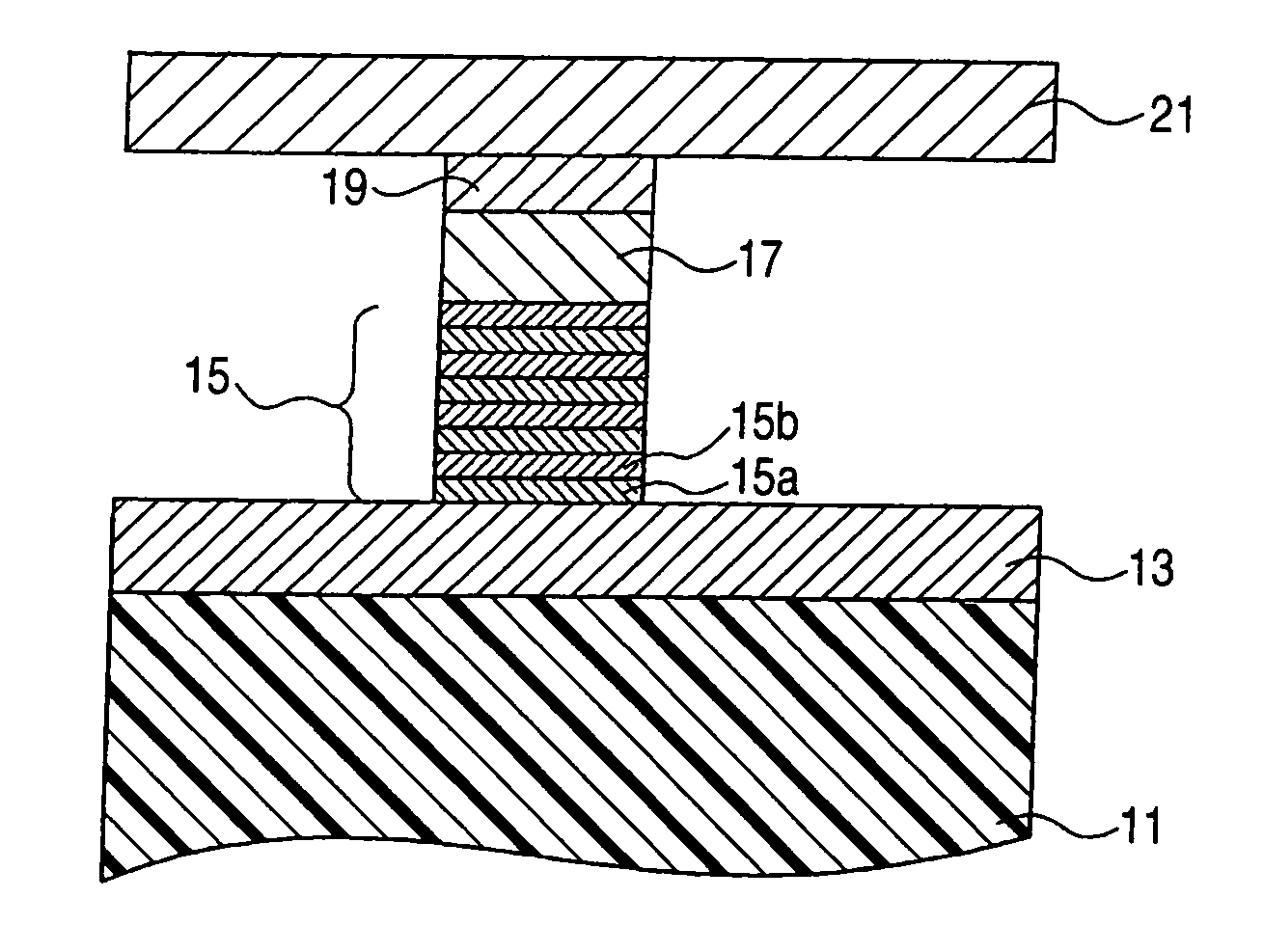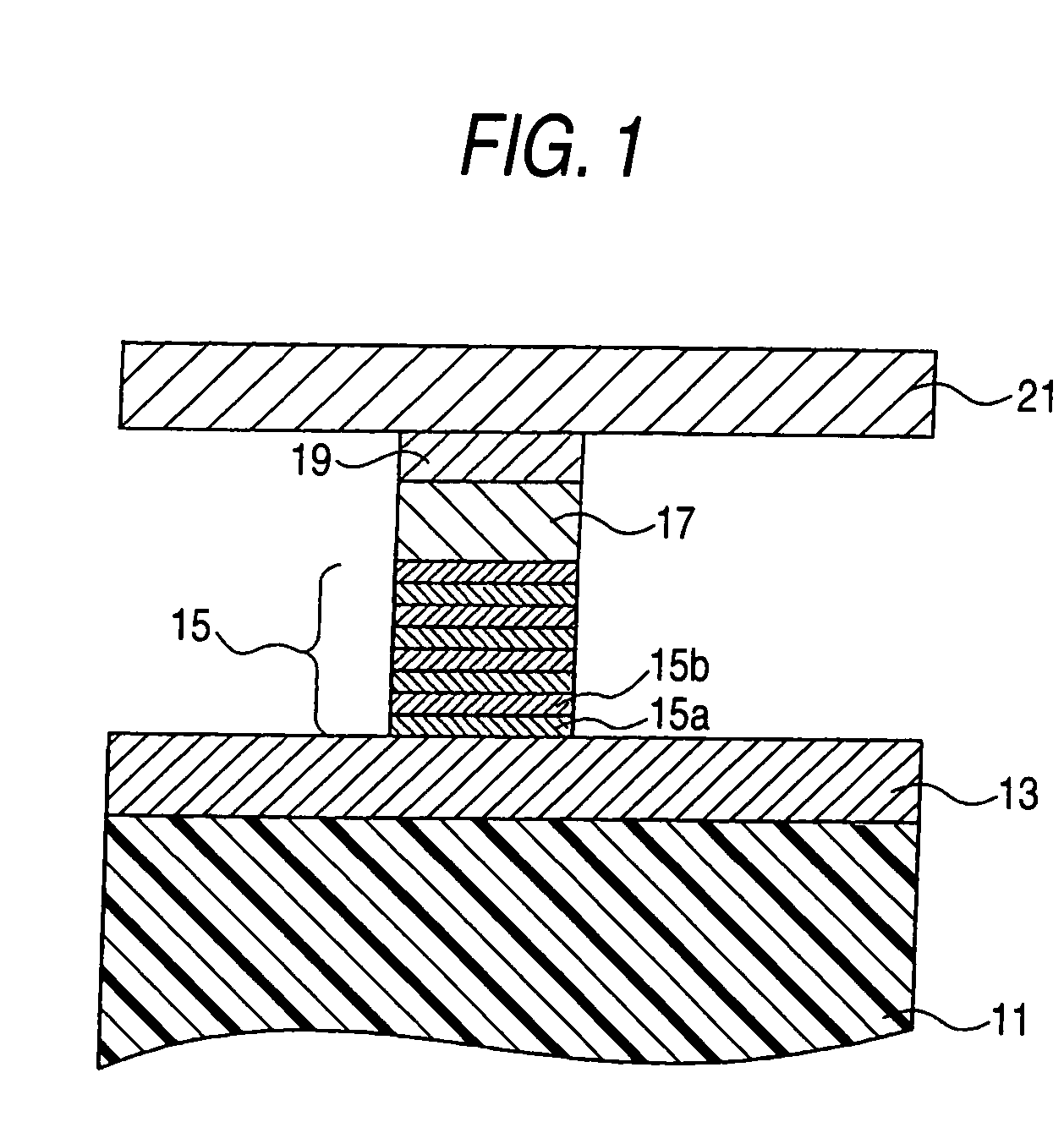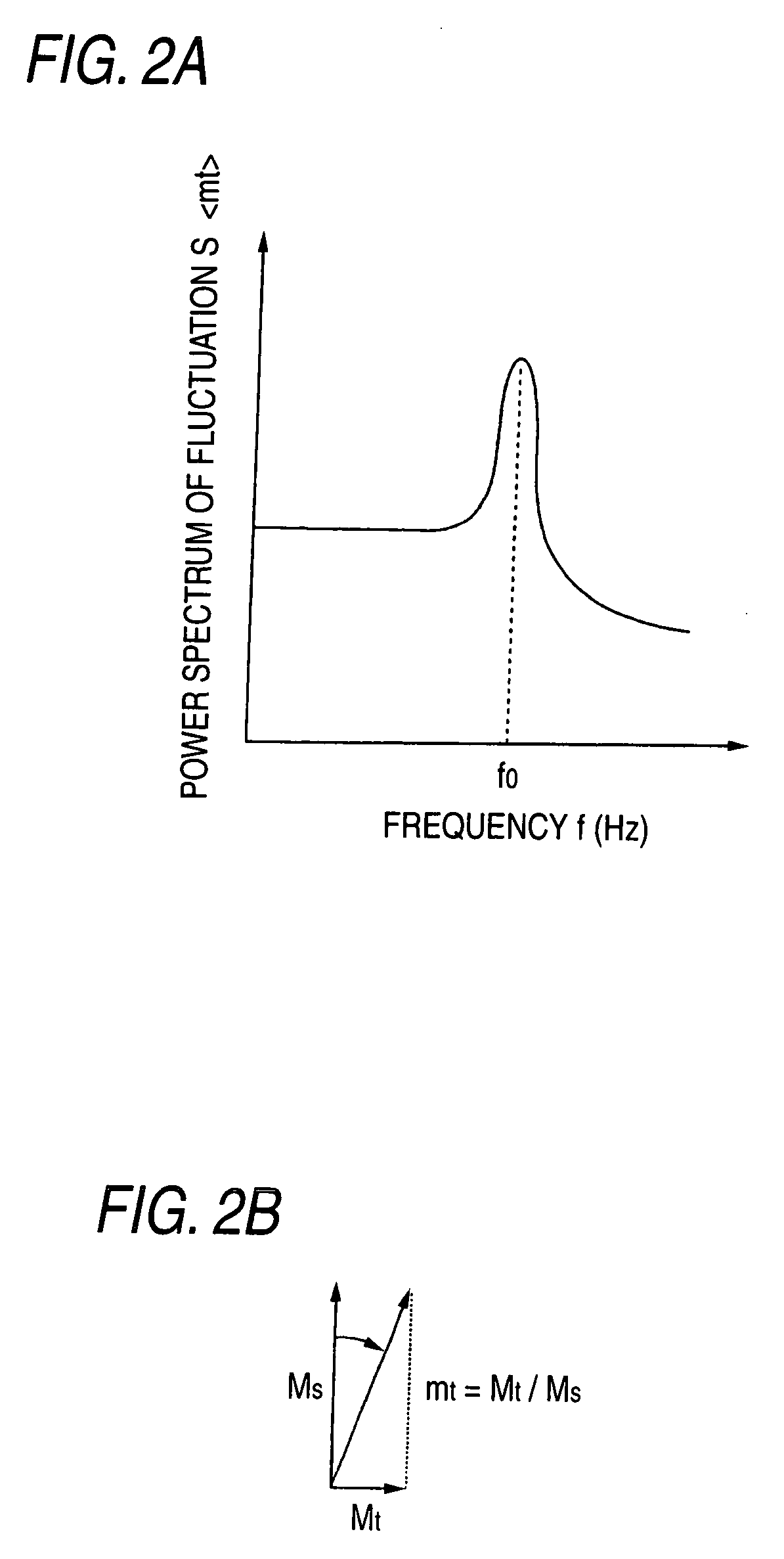Magnetic element, magnetic information reproducing head, and magnetic information reproducing apparatus
a technology of magnetic information and reproducing head, which is applied in the field of magnetic information reproducing apparatus, and magnetic information reproducing head, which can solve the problems that magnetic white noise can pose a serious problem in high-density magnetic recording, and achieve enhanced magnetoresistance change, high recording density, and no reduction of sensitivity and signal-to-noise ratio.
- Summary
- Abstract
- Description
- Claims
- Application Information
AI Technical Summary
Benefits of technology
Problems solved by technology
Method used
Image
Examples
example 1
[0113] Example 1 of the invention will be described below by reference to FIG. 11, which shows a sectional schematic diagram.
[0114]
[0115] In the present embodiment, thermal fluctuation of magnetization of a ferromagnetic material was measured first.
[0116] First, the following films were stacked on a silicon substrate 31 by means of sputtering operation and electron beam lithography. The multilayer film has a nonmagnetic Cu layer 33, a ferromagnetic Co layer 35, a nonmagnetic Cu layer 37, a ferromagnetic Fe layer 39, a nonmagnetic Cu layer 41, a nonmagnetic Au layer 43, and a nonmagnetic Cu layer 45 deposited on the substrate 31, in the order given.
[0117] Thicknesses of the respective layers are set as follows: namely, the Cu layer 33 assumes a thickness of about 100 nm; the Co layer 35 assumes a thickness of about 50 nm; the Cu layer 37 assumes a thickness of about 30 nm; the Fe layer assumes a thickness of about 1 nm; the Cu layer 41 assumes a thickness of about 10 nm; the Au la...
example 2
[0132] Example 2 examined (Co 0.5 nm / Ru 1.5 nm)10 multilayer film in lieu of the artificial antiferromagnetic film of Example 1. In the (Co 0.5 nm / Ru 1.5 nm) multilayer film, magnetization of the Co layers is anti-ferromagnetically coupled to the film surface in the perpendicular direction. As in the case of Example 1, a Si substrate having an antiferromagnetic film deposited thereon was set in a cavity resonator in which a resonance frequency is variable. A magnetic field was applied to the multilayer film in plane to the multilayer film. Then, the dependence of the resonance frequency on the applied magnetic field was measured. The following results were obtained: the resonance frequency of the artificial antiferromagnetic, approximately 10 GHz in a zero magnetic field, changed little even when a magnetic field was applied in plane to the film surface.
[0133] An element was prepared by replacing the artificial antimagnetic film with the (Co approximately 0.5 nm / Ru approximately 1....
example 3
[0135] In Example 3, an element was prepared by providing a barrier layer 29 on an element of Example 1. An oxide material layer was used as the barrier layer.
[0136] First, the bottommost Cu layer 33 (approximately 100 nm) was deposited by the same method as employed in Example 1. Pure oxygen of 10−5 torr was then introduced into a chamber for approximately one minute in order to oxidize the surface of the Cu layer, to thereby deposit a barrier layer 29 of approximately 4Ω at the interface between the Cu layer and the artificial antiferromagnetic film. Further, by reducing the number of layers of the artificial antiferromagnetic film to five layers, an element similar to that of the first embodiment was prepared. The current-voltage characteristics of the element are shown in FIG. 10. Black circles in FIG. 10 show the characteristics under an external magnetic field of 450 Oe, and white circles show those under an external magnetic field of 400 Oe. The rate of change in resistance ...
PUM
| Property | Measurement | Unit |
|---|---|---|
| thickness | aaaaa | aaaaa |
| area | aaaaa | aaaaa |
| junction area | aaaaa | aaaaa |
Abstract
Description
Claims
Application Information
 Login to View More
Login to View More - R&D
- Intellectual Property
- Life Sciences
- Materials
- Tech Scout
- Unparalleled Data Quality
- Higher Quality Content
- 60% Fewer Hallucinations
Browse by: Latest US Patents, China's latest patents, Technical Efficacy Thesaurus, Application Domain, Technology Topic, Popular Technical Reports.
© 2025 PatSnap. All rights reserved.Legal|Privacy policy|Modern Slavery Act Transparency Statement|Sitemap|About US| Contact US: help@patsnap.com



